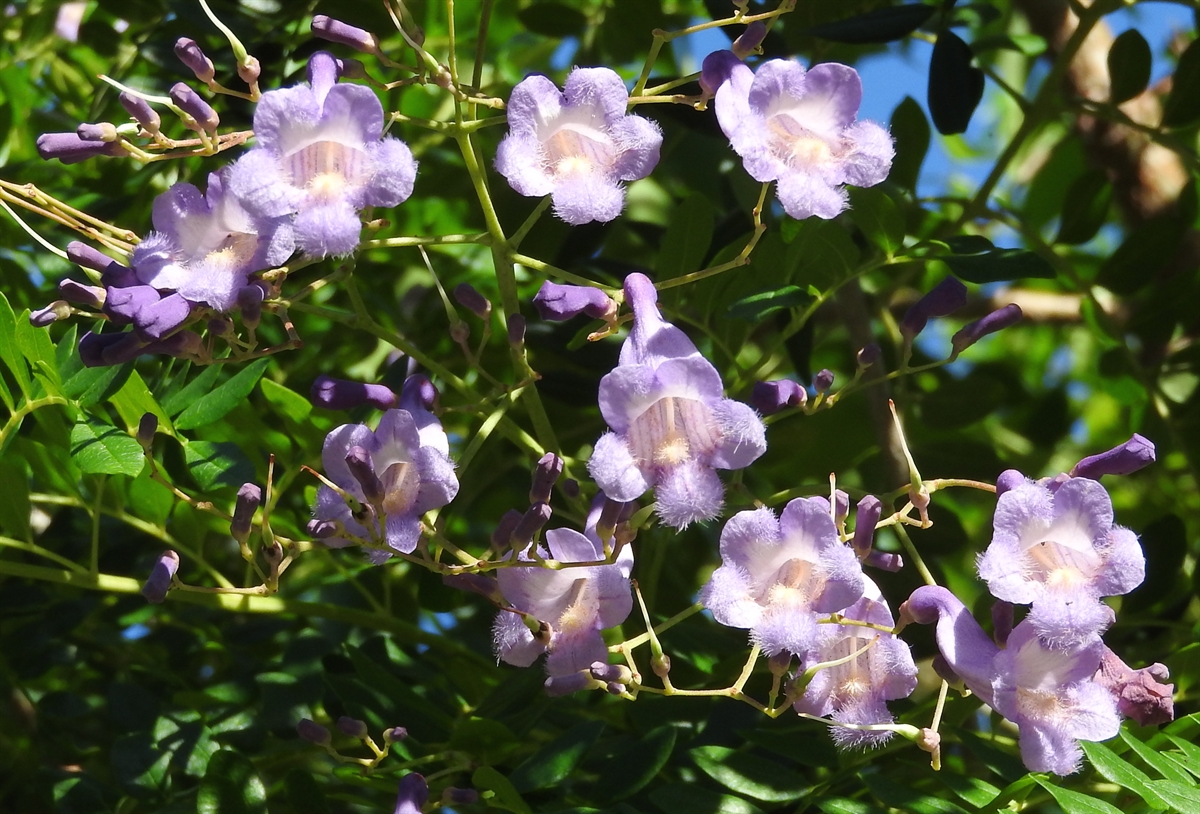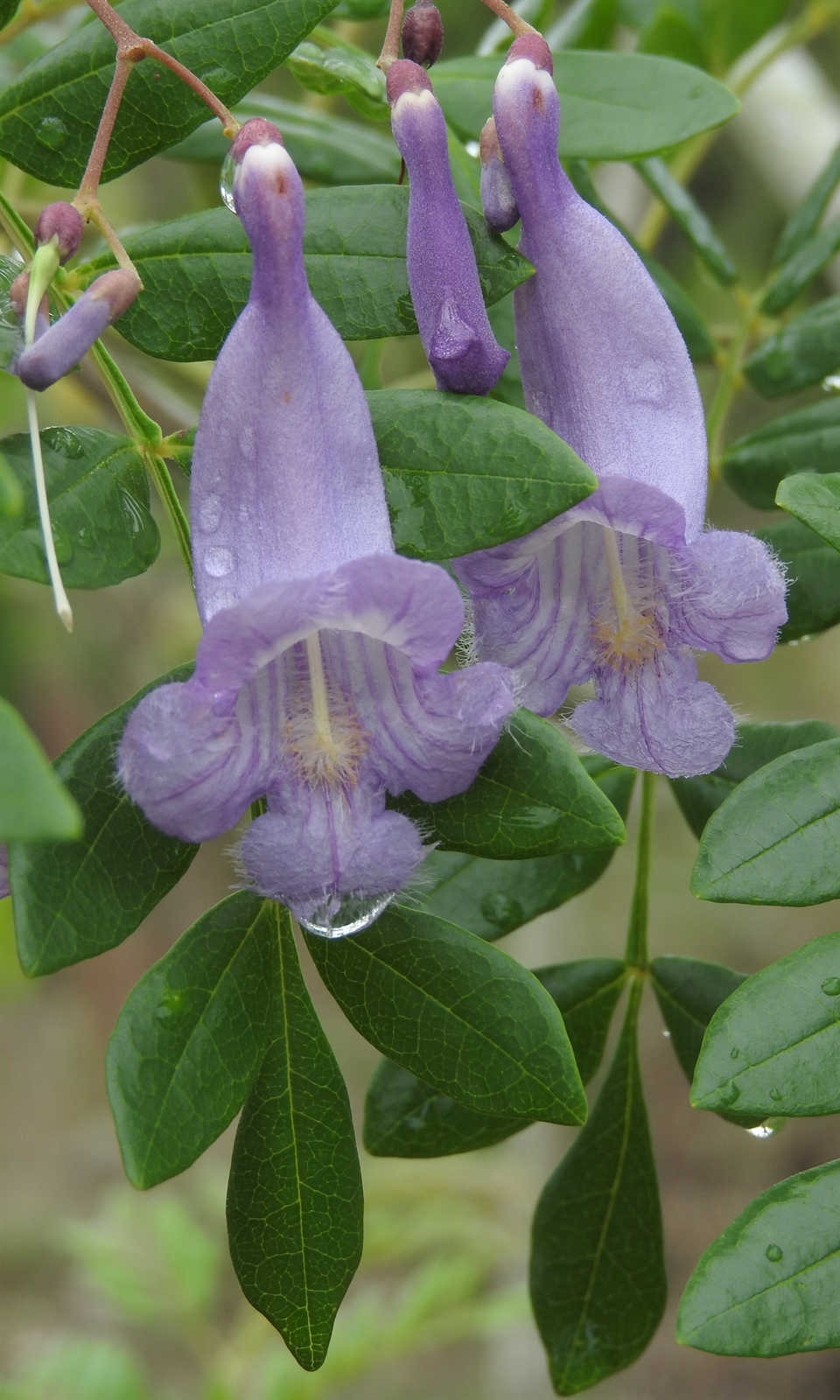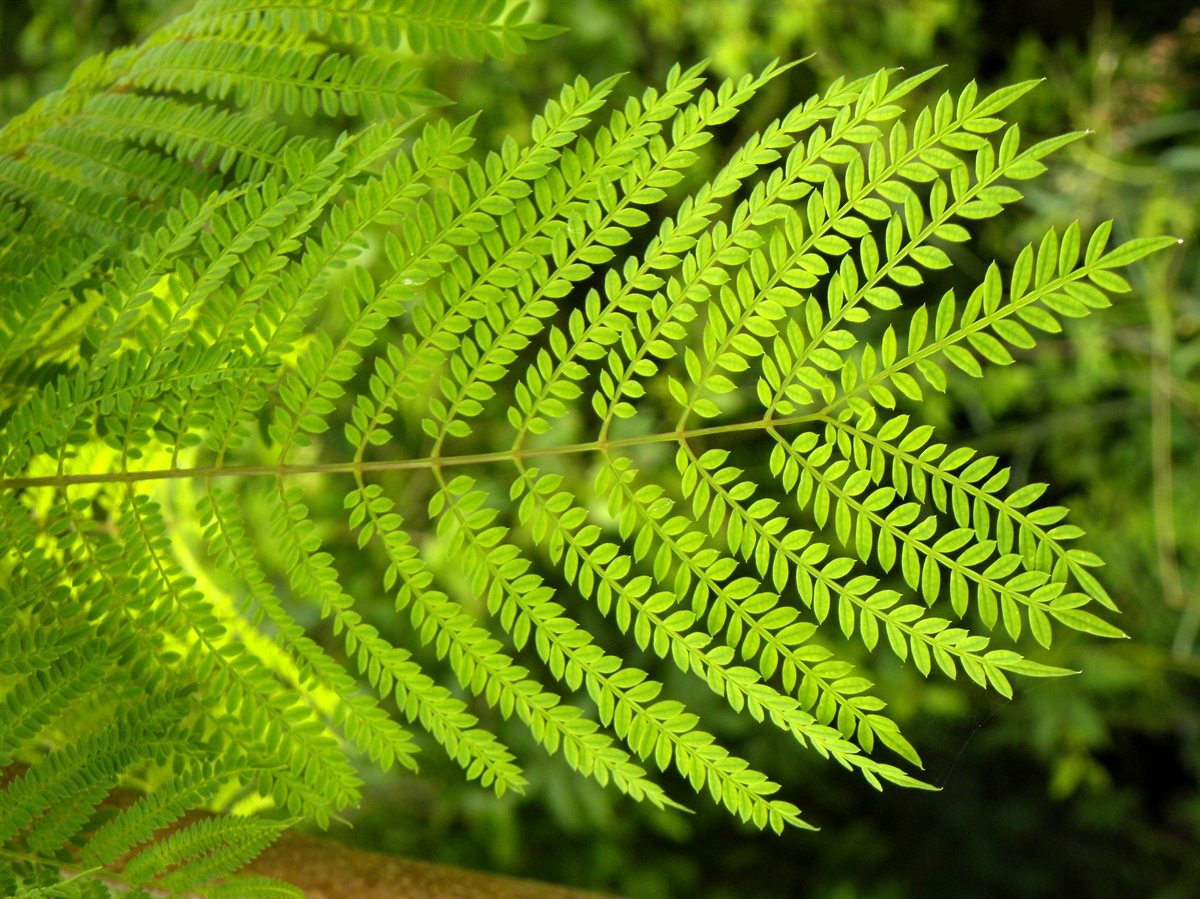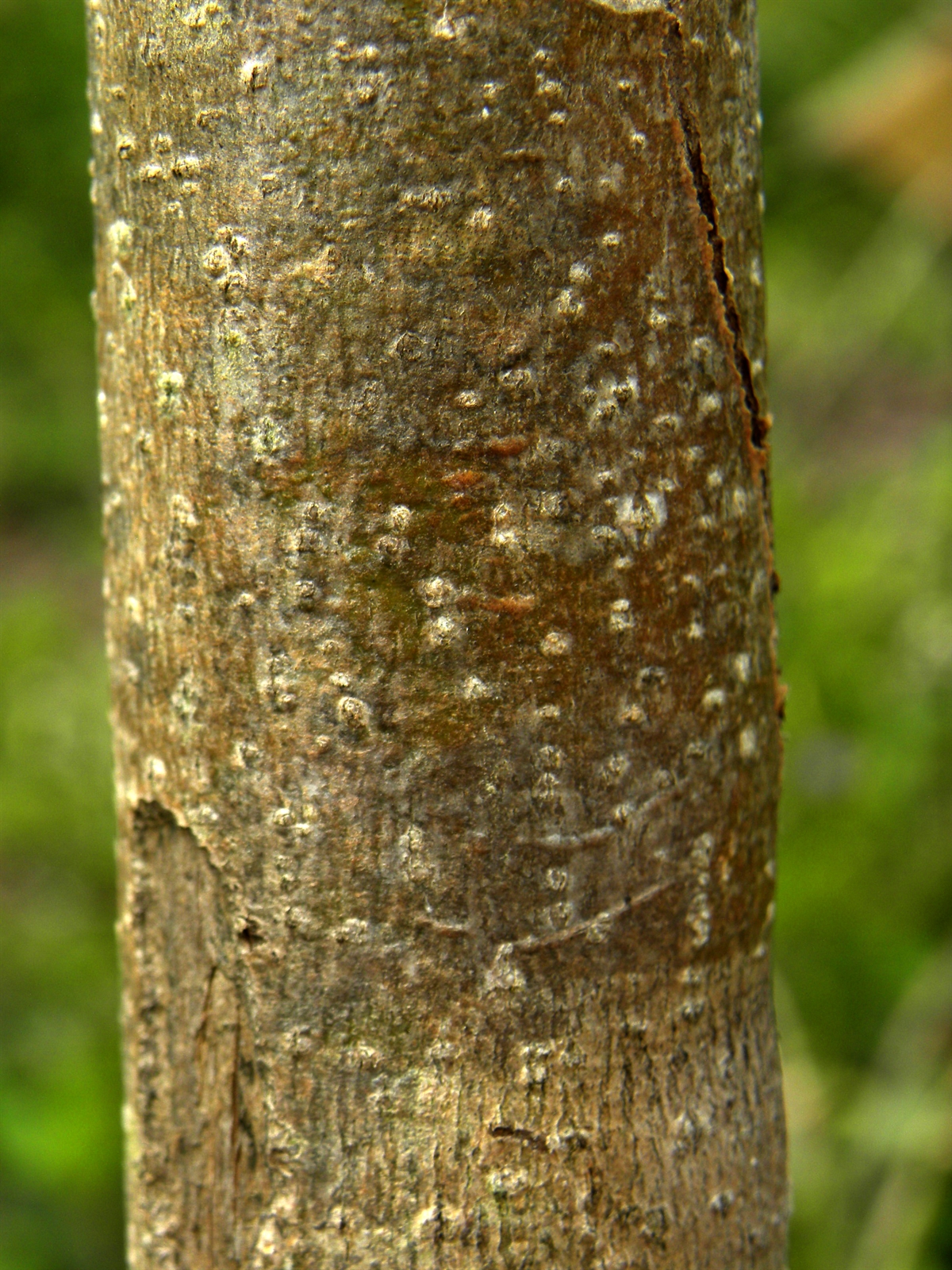Habit: Jacaranda caerulea grows as a tree to 14 meters in height and 30 cm in diameter. The bipinnately compound leaves are arranged oppositely and to 35 cm in length. The leaflets are in 4-20 pairs, have no petiolule, and are oblong with an acute leaflet apex.
The complete, perfect, zygomorphic flowers are arranged in panicles. The calyx has 5 unfused sepals. The corolla has 5 fused purple, pubescent petals with 2 upper lobes and 3 lower lobes. There are 5 stamens and the upper center stamen is highly pubescent. The ovary is superior with 2 locules and numerous seeds. The fruit is a flat brown capsule at maturity that splits apart to disperse the seeds. The seeds are winged.
Habitat: Jacaranda caerulea grows in Dry Broadleaf Evergreen Formation -Forests/Shrublands (coppice/scrublands).
Distribution: Jacaranda caerulea grows in the central and northern island groupings in the Lucayan Archipelago as well as the entire Caribbean area, the southern portions of South America and is now planted in the entire southern United States from California to Florida.
Medicinal/Cultural/Economic usage: Jacaranda caerulea is used medicinally in the Lucayan for obstetric and gynecological issues and dermatological problems (skin cancer and other skin ailments).
Jacaranda caerulea is also used in the horticultural industry for its beautiful spring flowering.



